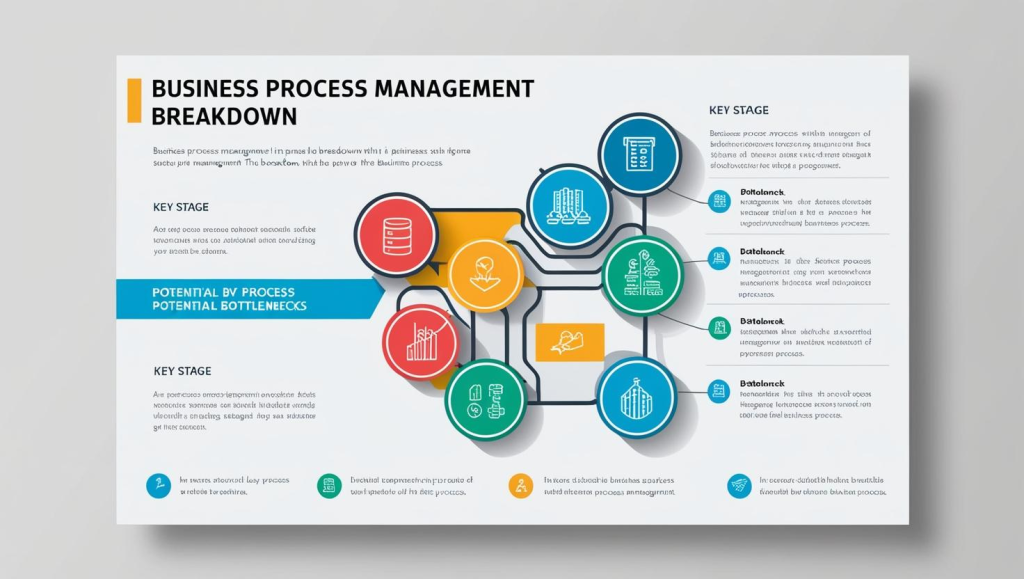
Did you know that about 90% of startups completely fail – many within the first few years. But how can you improve those daunting odds?
Building a business from the ground up is a complex process. There are many reasons that a startup might not pan out, but one large contributing factor is the fact that many startups are simply disorganized. Many are so focused on growth and scaling, that they neglect the importance of implementing standardized business processes to make growth and scaling more efficient.
In order to scale properly, it’s imperative that a startup create a standardized predictable framework for its most important daily operations before turning an eye to growth. This is called business process management (BPM). BPM sets the stage for growth by providing a framework for maximizing predictability, efficiency and productivity, leaving more resources available to invest in growth.
Today, we’ll be looking at how implementing scalable business processes can improve startup operations and help organizations survive and thrive.
WHAT IS BUSINESS PROCESS MANAGEMENT?

With limited resources and personnel, startups must make the most of what they have in order to succeed. Business processes management allows them to do just that.
Business process management is a framework for not only documenting operations within an organization, but for analyzing and improving them as well. BPM is particularly useful to startups, as its systemic approach allows an organization to grow predictably and sustainably through scalable business processes.
Scalable business processes are those that can adapt and grow as the company expands. They involve standardized procedures, automated workflows, and clearly defined roles and responsibilities that can be easily adjusted to accommodate increased demand, new technologies, and changing market conditions.
A BPM focused approach is like a roadmap for an organization that can help scale startups effectively. By implementing business processes management, challenges common to growing startups can be addressed effectively.
KEY BUSINESS PROCESS MANAGEMENT CHALLENGES FOR STARTUPS

Let’s look at some common business process management goals that can be achieved by creating a scalable framework for growth by applying a BPM focused approach.
EFFICIENCY
An effective BPM strategy for enhancing operational efficiency starts by mapping out your workflows and processes. By taking the time to clearly define each step in a process, unnecessary steps and bottlenecks can be identified and eliminated. This leads to increased efficiency by cutting down on wasted time and resources, with improved startup operations as a result.
SCALABILITY
Scaling startup operations is key for growth, and having a plan in place for expansion is the best way to achieve that growth. With a BPM framework to help guide growth, startups can implement scalable business processes to adapt to changing market conditions and identify gaps that can be covered without disrupting their core operations.
IMPROVED COMMUNICATION
Many startups lack the organization to clearly define roles such as who reviews contracts and whose signatures are required to finalize them. BPM helps organizations communicate more effectively by establishing clear roles and communication channels. This leads to improved collaboration and teamwork, and creates a sense of company culture.
FASTER AND BETTER DECISION-MAKING
Standardizing procedures not only helps efficiency, but makes decisions easier for leadership. Well established processes put decisions with the right leaders who are best positioned to make the right decision. Importantly, it also keeps the wrong leader from making a decision they are not qualified to make.
BETTER QUALITY PRODUCTS AND MORE MARKET SHARE
Business process management also helps ensure higher quality products. Through standardization of processes and procedures across all departments, organizations see increased customer satisfaction and loyalty, thereby earning greater market share.
DATA-DRIVEN INSIGHTS
When processes have been standardized, it facilitates data collection through key performance indicators (KPIs). Establishing KPIs allow startups to track metrics like customer acquisition cost, customer lifetime value, and many more. Analyzing these important growth metrics helps identify areas for improvement and make strategic decisions based on data.
BUSINESS PROCESS MANAGEMENT BREAKDOWN

We’ve seen the benefits business process management brings to startups. Now lets look more closely at how BPM is implemented to improve startup operations.
Business process management can be broken down into 3 types:
- Human-centric – Human centric BPM covers work that heavily depends on human functions, such as hiring new employees or handling customer service complaints.
- Document-centric – This form of BPM is concerned with the management of documents, such as reviewing, checking and signing legal agreements and contracts.
- Integration-centric – Integration-centric BPM handles processes that connect various systems together within an organization, including customer relationship management (CRM), enterprise resource planning (ERP), and human resource management (HRM).
Each of these three forms of BPM helps organizations streamline and organize their processes, laying a solid foundation to effectively scale.
5 STEPS TO IMPROVE STARTUP OPERATIONS THROUGH BPM
Each form of the BPM process uses a workflow that can be broken down into five steps:
- Define/Plan – The BPM process starts by documenting current processes, inefficiencies, bottlenecks, and other areas for improvement. Key objectives and outcomes are then identified and prioritized.
- Model – The next step is to identify, define, and present a new model with metrics and key performance indicators to measure the success of the project.
- Execute – Now that a new process has been designed, the next step is to execute the new model on a small sample size.
- Monitor – Monitor performance against the KPIs and growth metrics that were previously established to see if the changes have improved outcomes.
- Optimize – Based on the data observations, make final adjustments to the process to increase effectiveness before rolling them out on a broader scale. Employees can then be trained on the new process.
Remember, implementing BPM works best as part of an ongoing, continuous effort – not a one-and-done project. The BPM process should be a continuing part of the effort to measure, improve, and thoughtfully modify processes as an organization scales.
CONCLUSION
Scaling startups effectively takes a committed plan, one that the BPM provides to those willing to invest in the effort. By implementing well-defined and scalable business processes appropriate for your stage of growth, you can build your organization on a solid foundation for achieving sustainable growth.
Don’t let disorganization be the reason that your startup falters or fails.
Contact SVT Law today to learn how we can help your startup thrive. For 25 years, we’ve helped startups implement scalable business processes that navigate the challenges of rapid growth. Don’t waste another moment, let SVT help you create a solid foundation to build your company’s growth.
ABOUT THE AUTHOR

With 25 years of experience in Silicon Valley, Tom has worked with top companies like Apple, Amazon, and Dolby, and served as General Counsel for businesses ranging from startups to billion-dollar enterprises. A graduate of UC Berkeley and Stanford Law, he specializes in SaaS, AI, cloud compliance, healthcare IT, and more.
Tom’s client-first approach focuses on efficiency, clarity, and delivering results. He helps businesses achieve revenue growth, negotiate effectively, and plan for long-term success—all with pragmatic, plain-English advice. Based in Austin, Tom supports clients virtually, wherever they are.